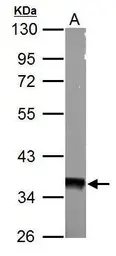AMPK gamma 1 antibody
Cat. No. GTX101661
Cat. No. GTX101661
-
HostRabbit
-
ClonalityPolyclonal
-
IsotypeIgG
-
ApplicationsWB IP
-
ReactivityHuman, Mouse
